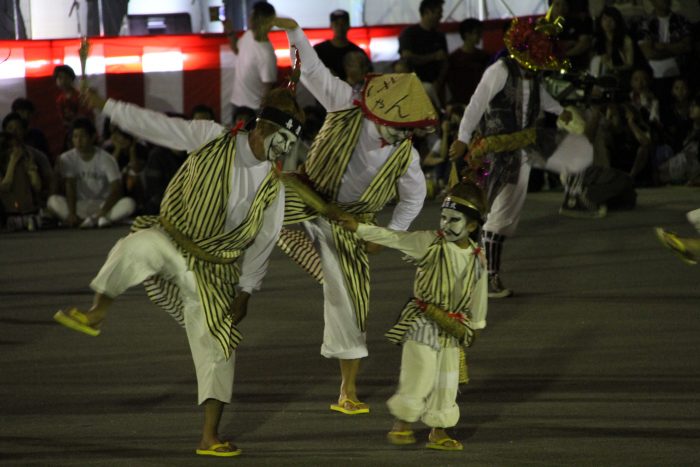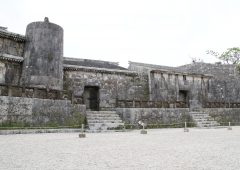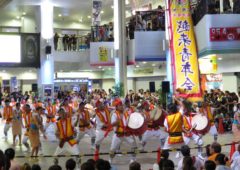2023.08.15
“Eisa”, Okinawa’s Famed Tradition
These days, when people think of Okinawa, the first image that may spring to mind are dancers clad in ceremonious garb armed with taiko drums and folding hand fans. This is Eisa; and it has become the essence of the Okinawan people.

Each Eisa group represents their districts with their own unique color and design.
Originally to entertain the ancestral spirits during Obon, Eisa has slowly evolved into a form of popular folk entertainment. These days it can be seen at almost any festival and celebration throughout the year. Most resort hotels on Okinawa employ semi-professional Eisa groups to entertain their guests year-round.
At the core, Eisa music consist of Buddhist songs and chants called “nembutsu,” introduced to Okinawa by Buddhist monks sometime in the late 16th or early 17th century. These days, the songs and dances has transformed into modern entertainment performed primarily by young men and women. It has also become a major form of entertainment in the ever-increasing tourism industry here on the island.

Eisa first took root in communities in the middle region of Okinawa during the Meiji-era, where newly organized youth groups took in Eisa into their programs. It was in 1956 when the first-ever All Okinawa Eisa Festival was introduced paving the way for Eisa hitting the mainstream and its rise to prominence. In Naha City 1964, the Youth Furusato Eisa Festival was established furthering Eisa’s popularity.

Originally, both events were contests to see who the best Eisa dance groups were. Eventually, it became just a festival of entertainment and brotherhood. Over time, Eisa changed, embracing creativity and group dynamics to fascinate the audience. As its popularity grew, so did the dancers’ costumes. Their ceremonial dress became more stylish and vivid. Each town donned their own unique dress and color and now, most groups carry a tall banner signifying the group’s hometown location. Number of drummers increased and eventually performers found their way into resorts all over the island.
Eisa tradition is still emphasized among Eisa-based youth clubs. Eisa club teams on the other hand, often incorporate modern Okinawan pop songs, mixing roles for males and females within the team, while adding physically demanding moves in their performances.
Eisa continues to evolve and change as newer generations take up the mantle. It’s hard to imagine what it may look like in another 50 years. Nevertheless, at the center of Eisa is the heart of the Okinawan people. Times may change, but the soul always remains.

 2024.07.12
2024.07.12 2024.07.07
2024.07.07 2024.07.02
2024.07.02 2024.06.21
2024.06.21 2024.06.11
2024.06.11 2024.06.08
2024.06.08 2024.06.03
2024.06.03 2024.05.30
2024.05.30 2024.05.25
2024.05.25






